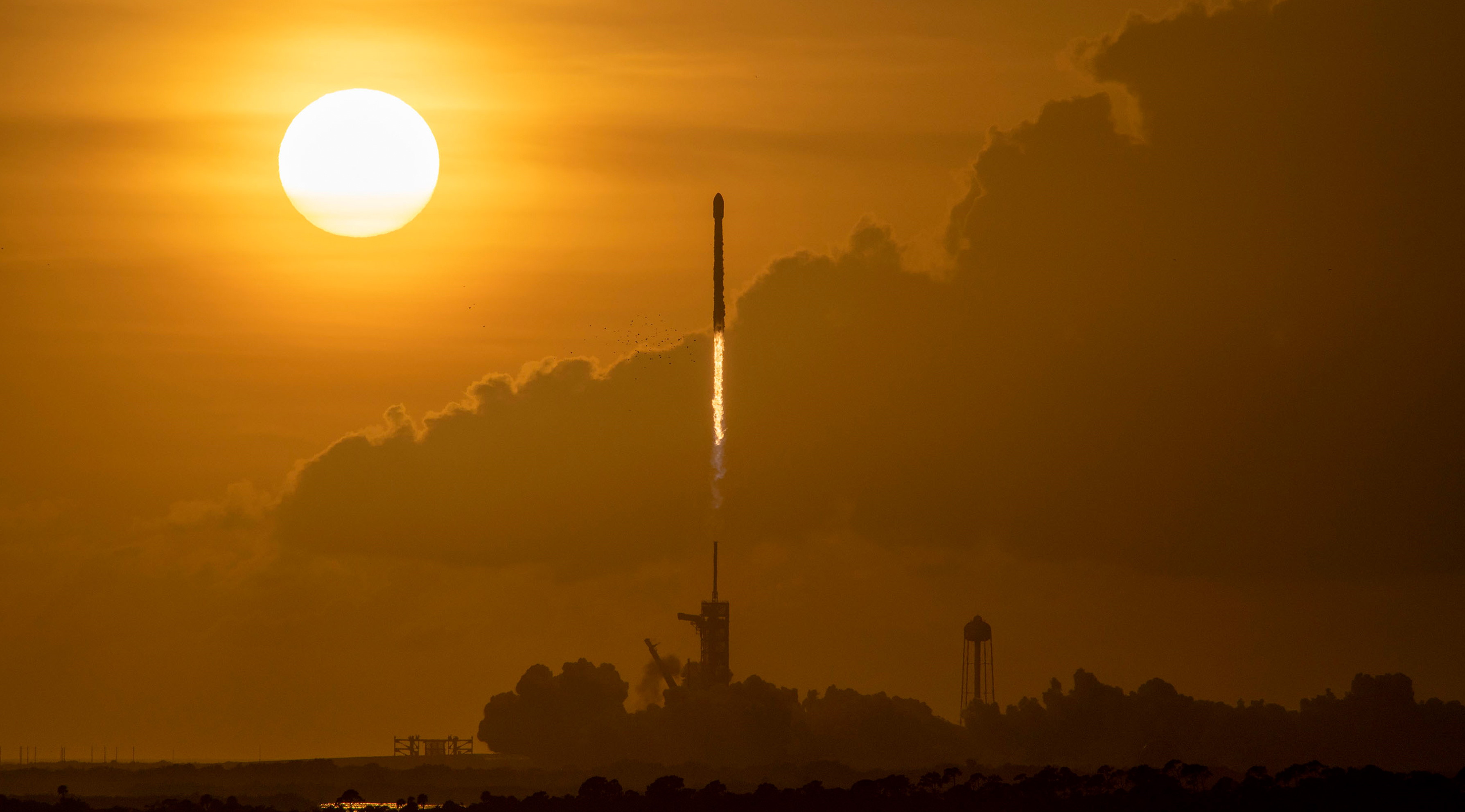Elon Musk's SpaceX loses 40 Starlink satellites in one day
A geomagnetic storm knocked the internet satellites out of the sky just one day after they launched.

It has not been a good week for SpaceX, Elon Musk's aerospace technology company. On February 3, the company successfully launched 49 Starlink internet satellites into orbit, but up to 40 of them will be lost because of a geomagnetic storm that occurred just one day later.
Satellite internet service is nothing new, but it suffers from significant flaws including limited speeds, high latency, and in many areas, prohibitive costs. Starlink, publicly announced in 2015, aims to offer significantly better performance—not quite as good as cable and fiber, but close enough to be competitive. Not everyone is a fan—some astronomers, for instance, worry about the impact of a multitude of bright satellites in the sky on their work—but in terms of bringing effective broadband to all corners of the globe, the system at the very least shows great potential.
Unfortunately, as detailed by space.com, the most recent satellite deployment was a major bust. The launch went off without a hitch, but the geomagnetic storm—a major disturbance of Earth's magnetosphere caused by sustained periods of high solar winds—on February 4 wreaked havoc on them. SpaceX explained in an update that the storm caused dramatically increased atmospheric drag on the satellites, threatening their orbit and leading the Starlink team to put them into a "safe mode" in which they would fly edge-on through the storm, like the wing of a plane. But once the satellites were put into safe mode, they could not be brought back to normal operation.
"Preliminary analysis show the increased drag at the low altitudes prevented the satellites from leaving safe-mode to begin orbit raising maneuvers, and up to 40 of the satellites will reenter or already have reentered the Earth’s atmosphere," SpaceX said in the update.
The February 3 Starlink launch can be seen in full in the video above:
This sort of thing is exceedingly rare—in fact, Space.com editor-in-chief Tariq Malik told PC Gamer in an email that he couldn't recall another recent example of a brand-new, successfully deployed satellite being brought down by a geomagnetic storm. But Space's launch strategy contributed to the conditions that made the event possible.
"The company chooses an intentionally low orbit so that if any of the satellites are malfunctioning, they can be commanded to deorbit themselves on purpose for disposal," Malik explained. "The lowest point of that orbit is only 130 miles (210 kilometers). Once all the satellites checked out, SpaceX would have commanded them to fire thrusters to raise their orbit to about 341 miles (550 km).
The biggest gaming news, reviews and hardware deals
Keep up to date with the most important stories and the best deals, as picked by the PC Gamer team.
"SpaceX's intentionally low orbit for initial satellite deployment, which is designed to be a safety measure to avoid cluttering up Earth orbit if a batch of Starlinks fail, left it vulnerable to the effects of increased atmospheric drag from the geomagnetic storm."
550 km is still a very low orbit—conventional communications satellites carrying television and radio signals typically orbit at altitudes exceeding 35,000 km—but the relatively short transit distance is a big part of how Starlink is able to achieve its relatively low latency, which is vital for anyone using the service to play online games.
More ground stations & less foolish packet routing will make the biggest differences.Looking at speed of light as ~300km per millisecond & satellite altitude of ~550km, average photon round-trip time is only ~10ms, so a lot of silly things have to happen to drive ping >20ms.July 15, 2021
Malik said it's currently not known whether SpaceX was aware of conditions that could result in a storm of this sort or if it was a complete "surprise event," but added that "SpaceX will likely pay extremely close attention to the local space weather environment around Earth before launching another multimillion-dollar Starlink mission to avoid this scenario in the future."
The fate of the nine satellites that appeared to survive the storm isn't clear either, but the good news for SpaceX is that while this is no doubt a costly loss, it's also a relative drop in the bucket. As of January 18, SpaceX has launched more than 2,000 Starlink satellites, and the current plan is to have as many as 42,000 in orbit.

Andy has been gaming on PCs from the very beginning, starting as a youngster with text adventures and primitive action games on a cassette-based TRS80. From there he graduated to the glory days of Sierra Online adventures and Microprose sims, ran a local BBS, learned how to build PCs, and developed a longstanding love of RPGs, immersive sims, and shooters. He began writing videogame news in 2007 for The Escapist and somehow managed to avoid getting fired until 2014, when he joined the storied ranks of PC Gamer. He covers all aspects of the industry, from new game announcements and patch notes to legal disputes, Twitch beefs, esports, and Henry Cavill. Lots of Henry Cavill.


